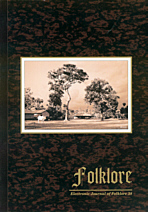“The First Buddhist Priest on the Baltic Coast”: Karlis Tennison and the Introduction of Buddhism in Estonia
“The First Buddhist Priest on the Baltic Coast”: Karlis Tennison and the Introduction of Buddhism in Estonia
Author(s): Mait TaltsSubject(s): Christian Theology and Religion
Published by: Eesti Kirjandusmuuseum
Keywords: Buddhism; theosophy; neopaganism; syncretism; syncretic beliefs; Karlis Tennison (Brother Vahindra); book history; history of printed matter
Summary/Abstract: Karlis Tennison(s) is an essential, although controversial figure inthe history of Buddhism in Estonia and Latvia. He was, without doubt, the first to disseminate Buddhism in the Baltic countries and also one of the earliest disseminators of Buddhism in Eastern Europe. Karl August Tõnisson, born in 1883 near Põltsamaa, Estonia, later repeatedly changed his biography (for example, transformed from an Estonian to a Latvian and simultaneously became ten years older). The article focuses on the development of his ideas. All his books and other publications, which are modest in volume and usually self-published, were issued between 1909–1916 and 1925–1930. The development of his views can be divided into three main periods: the pre-Buddhist period (before 1911); the ‘theosophical Buddhist’ period (1911–1916) and the period of ego-Buddhism or neopaganism (1925–1930). Around 1910–1911 Tennison ultimately converts to Buddhism. As he did not identify with any particular school, we may call him an ‘abstract’ Buddhist. In 1925 Tennison published a book in Latvian and from 1928 to 1930 three books in Estonian. In the publications of this period, Tennison retreats from the principles of Buddhism and allots more space to the glorification of his own personality and to criticism of Christianity, which was typical of neopaganism popular in Europe at the period. One of the most peculiar ideas in Tennison’s books is that of the Pan-Baltonian Empire. In that period Tennison also began to disseminate his view that Estonians’, Latvians’ and Lithuanians’ pre-Christian beliefs were somewhat similar to the religious and philosophical systems of India in the Vedic period, which, in the present-day world, are represented in their purest form in Buddhism.In 1930, Tennison, accompanied by Friedrich V. Lustig, left the Baltics and a year later also Europe, settling for the period 1932–1949 in the Kingdom of Siam. After leaving the Baltics, Tennison did not publish his texts as separate books, although during the last period of his life, in the 1950s and early 1960s while living in Burma, he is known to have been writing his so-called Buddhist Catechism, which remained unfinished.
Journal: Folklore: Electronic Journal of Folklore
- Issue Year: 2008
- Issue No: 38
- Page Range: 67-112
- Page Count: 46
- Language: English

